From Prison to Table — Bino Gabso’s Shakshuka
The Israeli dish that took the culinary world by storm
By Janna Gur
Published Feb 14, 2023
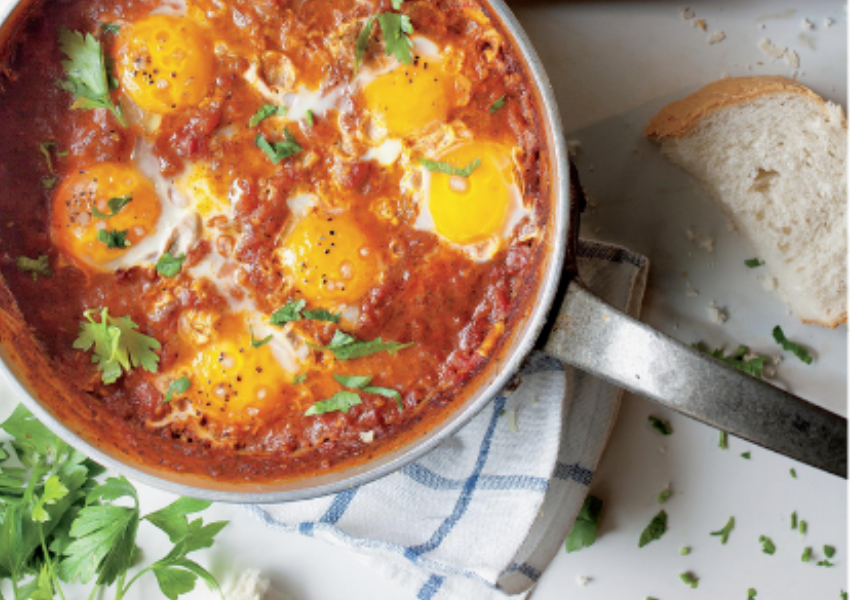
COURTESY OF JEWISH SOUL FOOD FROM MINSK TO MARRAKESH
About a decade ago, I came across a list of the most saved recipes on the NYT Cooking website. On the top of the list, right between creamy mac and cheese and a particularly decadent version of chocolate chip cookies, I discovered a surprising entry: shakshuka! Why surprising? Because a couple of decades earlier, hardly anybody knew what shakshuka was, not just in the States, but in Israel as well. This simple and hearty dish of eggs poached in a spicy sauce came out of total obscurity and quickly became one of the icons of local cooking. It then went on to conquer the world.
Shakshuka arrived in Israel with Lybian (Tripolitan) and Tunisian Jewish immigrants in the 1950s, but remained unnoticed by most Israelis. It did pop up here and there, stuffed in a pita at roadside eateries or served out of huge trays at army canteens. Messy looking, made in advance, and chronically overcooked, the shakshukas of the past were not dishes to rave about. But, all this changed in 1993, thanks to one chef and one restaurant.
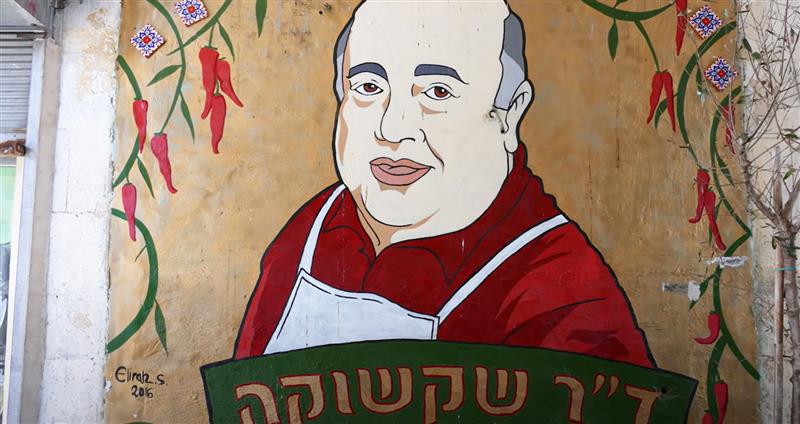
Enter Bino Gabso, a native of Jaffa born in 1952. His father used to run a Tripolitan restaurant that doubled as a money-changing joint. Bino joined the family business, in both its capacities, when he was twelve. He spent his military service working as a cook, and after his discharge, rejoined the family business. A few years later, he was charged with illegal money-changing activities and sentenced to a year in prison. Every morning, he would whip up a huge skillet of spicy and juicy shakshuka for the inmates.
“The smell would drive all the prison crazy,” he recalled in a newspaper interview. The guards got wind (quite literally) of the gifted cook and his signature dish, and he started making shakshuka for the prison staff as well. Little did he know that the family recipe, which he perfected during his jail time, was going to change his life and impact the nascent Israeli cuisine.
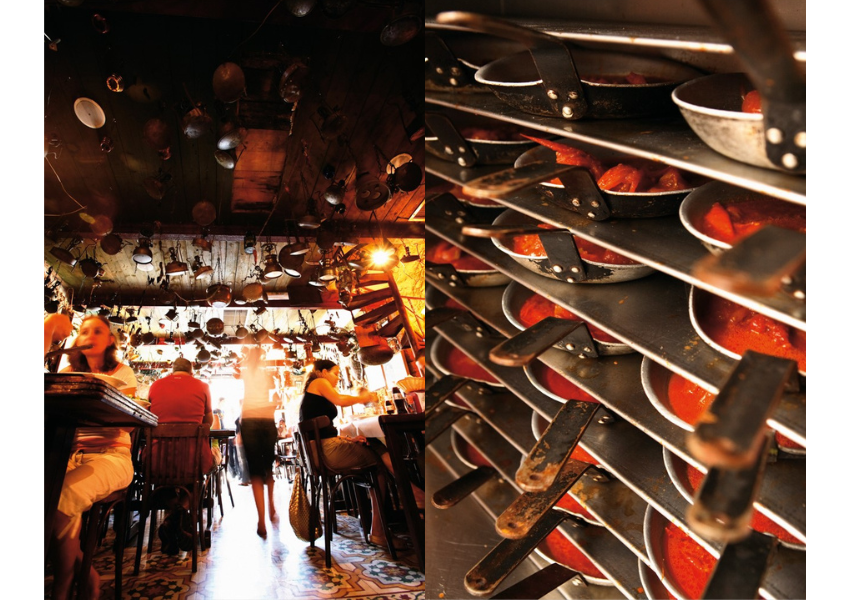
COURTESY OF THE BOOK OF NEW ISRAELI FOOD
Dr. Shakshuka's restaurant
In 1993, shortly after his release from jail, Gabso opened a small restaurant near the famous Clock Tower Square in Jaffa. He called it “Dr. Shakshuka”, a moniker given to him by the grateful inmates. The menu featured all manner of Tripolitan delicacies, including authentic hand-rolled couscous, but the hit was shakshuka – cooked to order and served in cute iron skillets with a slab of soft bread to mop up the sauce.
The cavernous restaurant, decorated with knickknacks from the neighboring flea market, was an overnight sensation. The public, as well as restaurant critics and fellow chefs, were smitten, and shakshuka started its meteoric rise to fame.
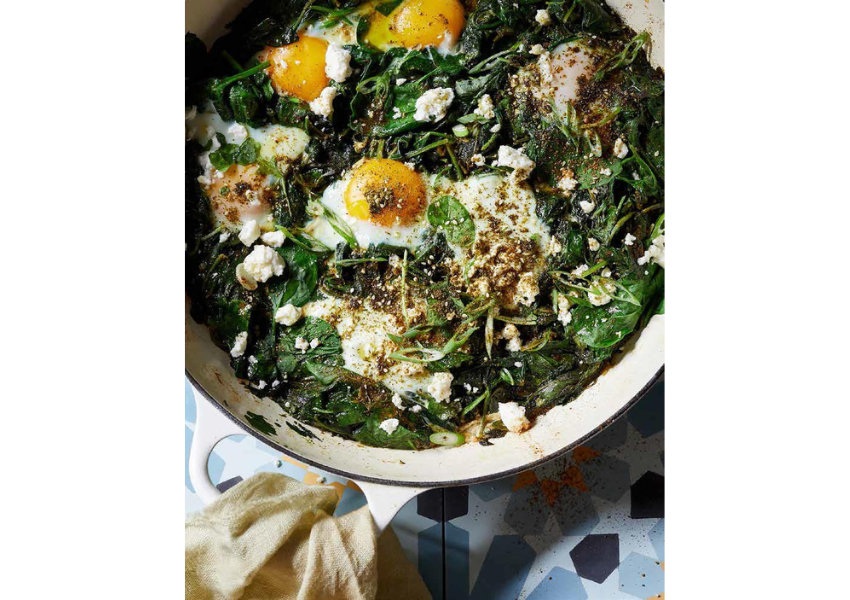
COURTESY QUENTIN BACON
Green Shakshuka with Chard, Kale, Spinach, and Feta
Traditional shakshuka is based on a spicy, garlicky, and fragrant tomato sauce. Shortly before serving, a few eggs are cracked on top and cooked until set. However, when this Tripolitan classic arrived in the kitchens of creative Israeli chefs, it quickly started to change.
Roasted or chargrilled eggplants, shredded spinach, boiled chickpeas, crumbled feta cheese, slabs of haloumi cheese, and meatballs were added to the basic sauce. The forgiving shakshuka welcomed all of these and many other trimmings. But that was just the beginning: soon completely different kinds of shakshukas made their way to the restaurant menus: green shakshuka (based on spinach or chard), yellow shakshouka (with coconut milk), mushroom ragout shakshuka, seafood shakshuka… the list goes on and on.
In the late nineties, a little-known neighborhood hummus joint in Ra’anana came up with hamshuka — hummus topped with shakshuka, fusing two local food icons into one tasty, messy dish that was widely imitated.
Nowadays, it seems like any dish served out of the skillet with some cracked eggs on top could qualify as shakshuka. Come to think of it, even eggs are not mandatory, as eggless vegan shakshuka is gaining popularity.
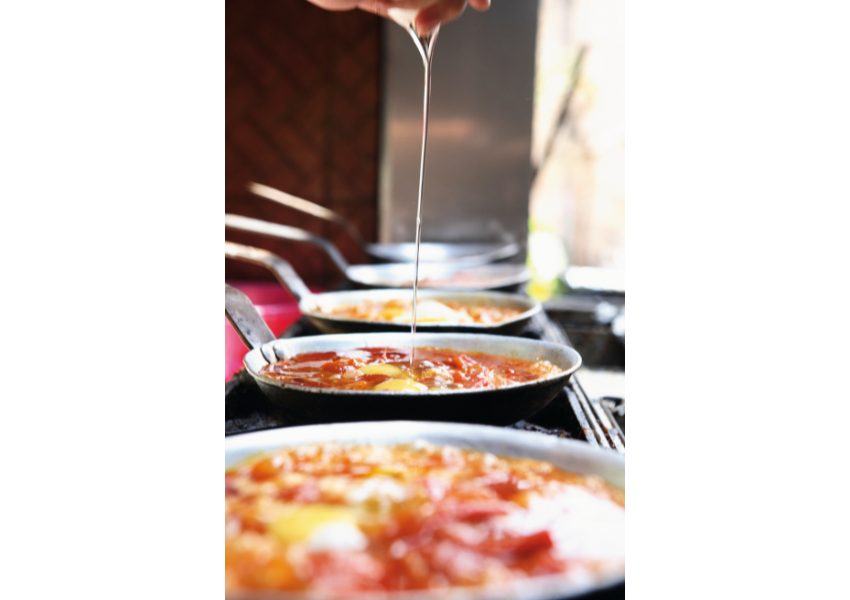
COURTESY EILON PAZ
Shakshuka Recipe
The following recipe is based on filfel chouma – the fiery and delicious Tripolitan condiment that is worth having around. Shakshuka is supposed to be piquant, but the level of spiciness is up to you – don’t add all the chilis and filfel chouma at once. Taste as you go.
Shakshuka:
Ingredients (serves 4-6):
8-10 ripe and juicy tomatoes (off-season use two 14-ounce cans of chopped Italian tomatoes)
3 tablespoons olive oil
5 minced garlic cloves
1-2 fresh chili peppers, seeded and chopped (or to taste)
1-2 tablespoons filfel chouma (recipe below) or harissa (store bought is fine)
Salt and freshly ground black pepper
6-8 eggs, preferably organic or free range
Directions:
- Prep the tomatoes (if you are using canned ones, go straight to the next step): bring a large pot of salted water to a boil and prepare a large bowl of ice water large enough to contain the tomatoes. Make a small crisscross on top of each tomato, blanch them for 1-2 minutes, and transfer to ice water. Peel, seed, and chop coarsely.
- Heat olive oil in a large deep skillet over medium heat, add garlic and chili and stir well. Stir in some of the filfel chuma or harissa and cook for a minute or so until fragrant, taking care not to burn it.
- Add tomatoes. Increase the heat and cook for 3-4 minutes until tomatoes have released some of their juices. Reduce the heat, cover, and simmer for 20 minutes. Season with salt and pepper. Taste and adjust seasoning. The sauce must be flavorful, spicy, and fully cooked. Once the eggs are added, it is difficult to stir and adjust seasoning. Up to this point, the sauce can be made ahead and stored in the fridge or even frozen.
- When ready to serve: bring the sauce to a boil. Using a spoon, create 6-8 craters in the sauce. Carefully crack eggs one by one and slide each into a crater.
- Cook for 5-8 minutes, depending on how you like your eggs done (I prefer mine slightly runny). Serve at once in the skillet with lots of soft white bread or challah.
Filfel Chouma:
Ingredients
10 cloves garlic, minced
1 teaspoon high quality cayenne pepper
4 tablespoons high quality sweet paprika
1 scant teaspoon ground caraway
1 scant teaspoon ground cumin
1/2 cup vegetable oil, plus more oil, to cover before storing
2 tablespoons freshly squeezed lemon juice
1 teaspoon salt
Directions for the Filfel Chouma:
- Mix the ingredients into a smooth paste.
- Transfer to a sterilized jar, cover with two tablespoons of oil to prevent spoilage, and store in the refrigerator. It keeps for a long time.
Janna Gur is a Tel Aviv-based cookbook author, journalist, speaker, and culinary expert.
Reflections
Think about it
What, in your opinion, made shakshuka so popular in the US?
Share
Have you ever made a shakshuka, and if yes, which recipe have you used?
Test your knowledge
Are you familiar with additional dishes from North African Jewish Cuisines?
Want more?
Get curated JewishArts.org content in your inbox


